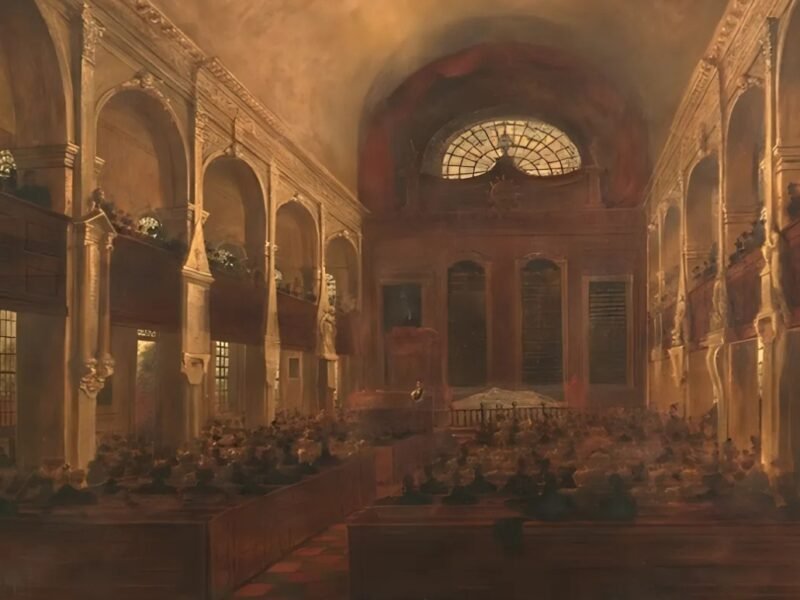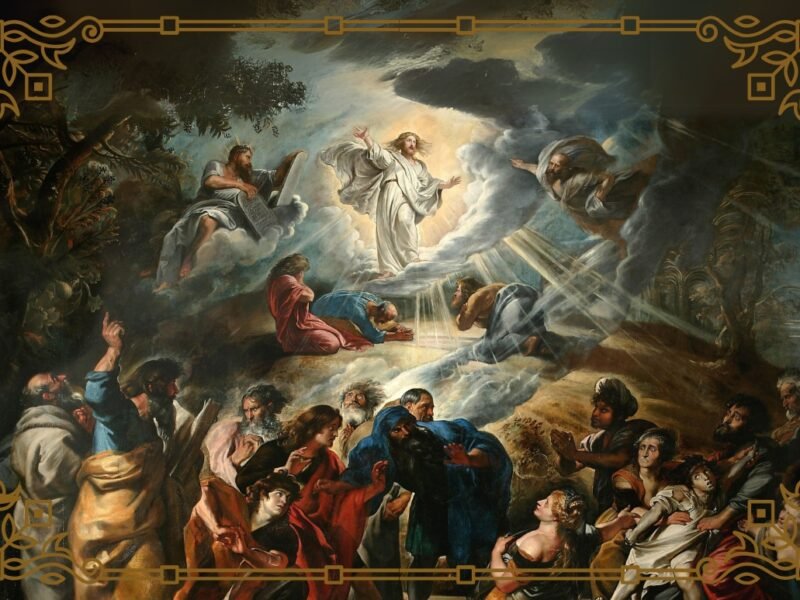The debate touched off by Emily Mcgowin’s article on Women’s Orders in Anglican Pastor has opened onto the vast territory of the theology of gender. That is, of course, an important controversy to have out (though perhaps not on comment boards), but in the midst of the ruckus, I think that it is worth returning to her original argument, which was a good deal narrower in scope and worth treating on its own merits because it presents a good opportunity to talk about sacraments, what we think they are, and how we reason about them. She makes the case that the doctrine of In Persona Christi (the idea that the priest stands in the representation of Christ at the altar), though frequently cited by gender traditionalists, actually supports the possibility of a female priesthood. If Christ, though male, saved women by his assumption of their common humanity, then that humanity ought to be good enough to represent him at the altar.
Though this is an attractive argument, this is not where the logic of In Persona Christi comes from, and the reality is not nearly so complicated. The doctrine, like all good sacramental theology, proceeds from the same experience that you instinctively have when you are viewing or drawing a picture of Jesus. It doesn’t matter if it is an Orthodox icon or a Sunday School coloring book: the best way to represent Christ is as a male because Christ was male.
If this seems too obvious that’s because I think it is. Sacraments are pictures after all, and talking about pictures requires a vocabulary that may seem unsatisfactory when it comes to systematic theology, but it is actually part of the foundations of our theology. The sacraments are revealed images, and we reason from them, not to them.
What about the controversy between those who believe female ordination is possible and those who don’t: why would two different pictures inspire such heated debate and threat of division? This is because sacraments are not just ordinary images. A sacrament is a symbol that does what it says it does. It’s like the difference between a wedding ring (a ring does not make you married) and a signature on a contract (you’re bound to this now). A sacrament is called an effective sign because the sign accomplishes what it signifies. Because sacraments are effective signs, the form of the symbol is not interchangeable. In short, the matter matters. Changing the image changes what it does.
McGowin rightly points out that sacraments, like icons, don’t require one-to-one correspondence. But that does not mean that they do not require any correspondance. An “analogy of being” needs to make sense, after all. The comparison McGowin makes to icons is particularly helpful here since the tradition of Eastern icon painting comes with very strict rules about what sorts of innovations the artist may or may not make–and deviations from these tropes have even been denounced as spiritually dangerous! So like icons, it is important to know whether we have the right picture in our sacraments. Where do we turn to find out?
To answer: let us take another example from the sacrament of the Eucharist. How do we know that bread must be the picture for Christ’s body and not another form of grain like breakfast cereal? Where do we look? This is where scripture and the Church’s tradition (the faithful witness to scripture) is our guide. The scriptures tell us that Jesus identified bread as his body. If we aren’t sure we got that right, we look at the practice of the early Church and we see that, indeed, we got the same message from it as its earliest hearers. When sacramental Anglicans refer to “the universal practice of the undivided Church” we aren’t swinging a club, we’re asking: “does what we hear from the scriptures agree with its earliest hearers?” When things seem unclear or there appears to be some wiggle room, then we feel authorized to agree to disagree. But when our ideas disagree to the point of contradiction with the overwhelming witness of the early Church then we need to check our hearing. If the earliest Christians used bread, if they used bread everywhere, if all orthodox Christians used bread, then we should really not use something else. Because the bread in the sacrament is an effective sign, then that means that having bread is essential to receiving Christ’s body, and we are not authorized to go about it any other way.
Before we get to where I’m obviously going (and while you may be marshaling your objections), let’s take a moment so that we do not miss something important. Without the scripture and the Church’s practice, there is no way that we could have ever figured out that bread is how we receive Christ’s body. Our reason rightly takes a back seat to what has been revealed. But that does not mean that God’s choice makes no sense. Looking through the scriptures, we see that God has often used bread to represent spiritual sustenance and administer real sustenance: The priest Melchizedek brings out bread (and wine) to Abraham, God gives Israel the manna in the wilderness, there is the mysterious “bread of the presence” in the tabernacle, there is Elijah’s miraculous meal on the way to Horeb, and Elisha’s multiplied barley loaves. Christ himself multiplied bread at his feeding miracles–events which clearly looked forward to the Eucharist. These do not explain why Christ’s flesh could not have been represented by something else, but it is easy to see why it makes sense that it is, and we can then safely turn to theology to discern and debate God’s reasons for this. But I do not believe that we are capable of coming up with a different picture than the revealed one.
So how is it that maleness is an essential quality of standing In Persona Christi and, say, Jewishness, being 33 years old, bearded, and having (probably) brown eyes and skin are not? What does it actually take to render Christ’s form faithfully at the altar, to stand In Persona Christi? These are not impious questions, and I am glad that folks are asking them. Here again, scripture must be our guide. When it came time to replace Judas the apostate from among the twelve, no facial, racial, or any other accidental features are mentioned, except that the new overseer must come from “one of the men who have accompanied us during all the time that the Lord Jesus went in and out among us.” (Acts 1:21). It is also important to note that this is said in the presence of “the women and Mary.” (Acts 1:14). Then there is Paul’s famous (infamous?) anthropology of male and female roles in Church which reinforce the impression that Christ’s authoritative representatives–to whom are apportioned the offices of sacramental administration and the office of teaching–in the Church are to be male. Add that to the male priesthood of Israel whom Christ re-images in his selection of his 12 disciples, all of whom are male and one gets the overwhelming impression that humanity alone is not the sign for the sacrament of Holy Orders. Male humanity is. Have we heard our scriptures clearly on this matter? Again, the early Church thinks we have. The universal practice of the Episcopal traditions–those that have ordained bishops in the apostolic lineage–has endured as a male episcopate and presbyterate (“bishop” and “priest” were interchangeable terms in the New Testament) to the present day. For this reason, it is also important to consult the other communions that have maintained the Apostolic Succession. When Rome and the East agree on something, it is a good idea to listen to what it is.
This is not to say that faithful Christians are not allowed to bring Christ’s feminine qualities to light (Julian of Norwich springs to mind). But I would argue that the Church’s mystical tradition has felt free to do this when it has not threatened to change his authoritative image. No amount of such mysticism ever produced a tradition of female Christs in icon or sculpture, and if the priesthood is also an “icon” of greater weight, then we ought to keep that in mind. This also goes to Dr. McGowin’s point on how a mixed congregation can be rendered to be female. The male priesthood vouchsafes the female Church, for even though men appear there, women are exclusively to be found there and may justly take some pride of place, as the many images of the Virgin have attested. This is why in some Reformed Episcopal dioceses, deaconesses wear special cassocks and sit prominently interspersed around the congregation. As to McGowin’s question about how the male priest may stand In Persona Ecclesiae, I would simply say that the priest stands as such toward God and not the people. Whereas God, being God, is not liable to be confused by a male representing his bride, the Church, being people, would likely be confused by Christ rendered, consistently and authoritatively, as a woman (imagine entering an Orthodox Church and the great icon of Mary and Christ over the altar (Our Lady of the Sign) is reversed: a female Christ inside of a male Mary.). But here I have joined McGowin in pious speculation. When we have received revelation as such, then we are free to wonder. What we are not free to do is change the image.
There is a good deal to be said about the importance of female leadership in the Church, but such discussions should take place on their own terms for the edification of the Church, instead of appending them to a debate on Holy Orders. It would do our sisters an indignity to treat the subject as a consolation prize. However, I should acknowledge that the above reasoning is certainly frustrating for our sisters and brothers who believe that female ordination is a possibility for a couple of understandable reasons. It seems all very neat, even circular: the picture cannot be altered into something else because then it would not be the picture. But these are the waters we must enter when we talk about any of our sacraments. They are revealed, effective images, not pictorial emanations of our best theology. Dr. McGowin, as a good confessing theologian, no doubt agrees that our soteriology must reason from revelation, but the way in which she reasons to the form of the images, indicates that she does not seem to count the sacraments as part of this latter category (and I do not think that she is alone in this). In my opinion, turning the debate about women’s orders into a discussion on what sacraments really are, and therefore what we may and may not do with them, would be a most welcome development for the ACNA.
Images can be frustrating things. Indeed, this is no less true for opponents of women’s orders than proponents. But Christ’s own maleness presents us with the same, frustrating quandary: how can it be that Christ, the perfect image of our genderless God, appeared as a male? Is it simply that he needed to pick one out of necessity and decided to flip a coin? (or as theologians like to put it: “the incarnation meant exhibiting the quality of gendered particularity”) Was he constrained by the cultural precepts of his time? Or does his revelation as the bridegroom coming for his bride carry deep significance? Whatever we reason about these questions, Christ must be received in the form in which he came, and if the priesthood is indeed to stand in his person, then it must do so as well.






'Imago Dei, Persona Christi' has 1 comment
August 4, 2023 @ 5:29 pm Harrison
A sound and charitable article, Father Alex. I will pass this around.